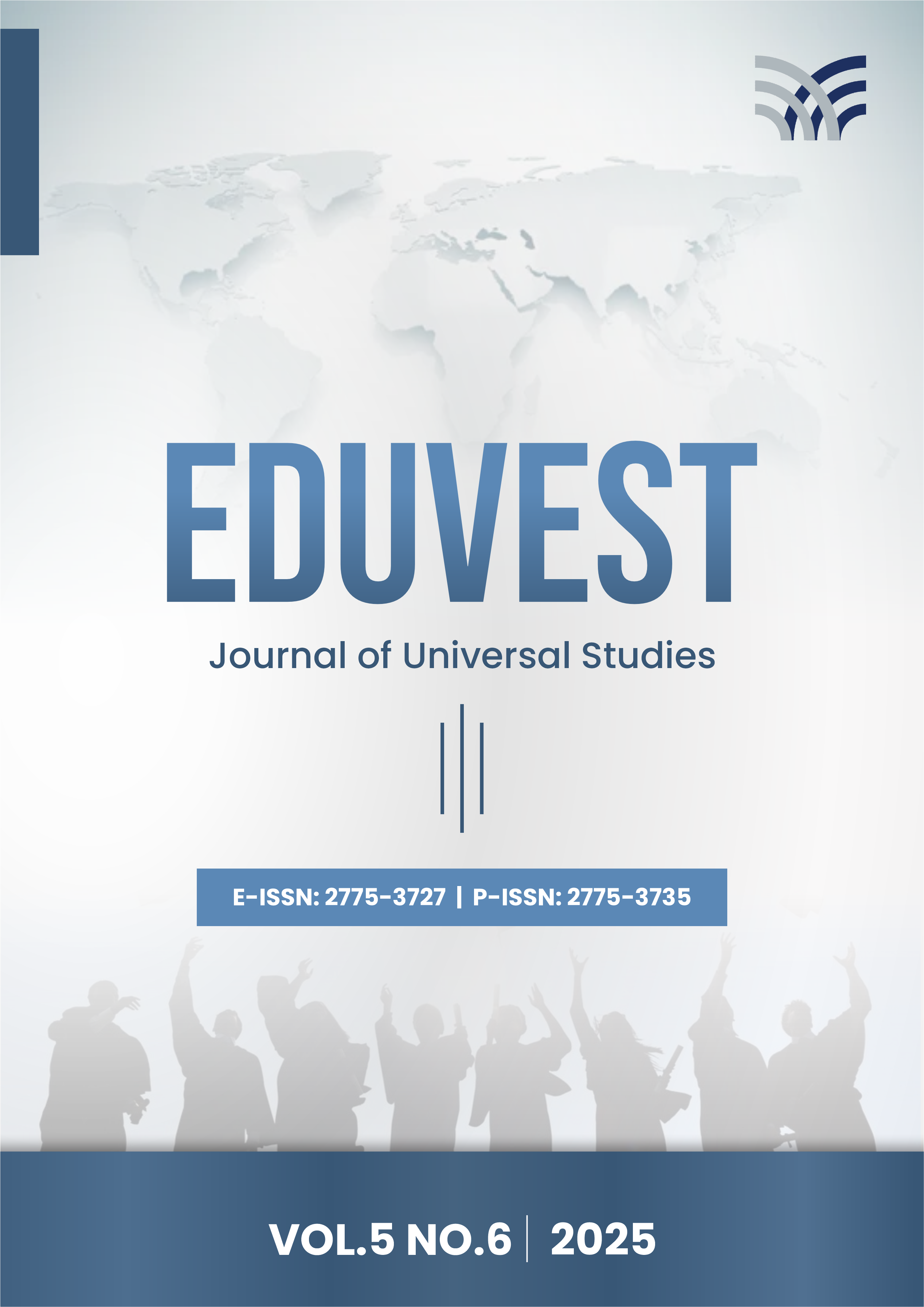The Relationship Between Education Quality and Student Transfer Rates
DOI:
https://doi.org/10.59188/eduvest.v5i6.50130Keywords:
Education Quality, Transfer Rates, Principal, ManagementAbstract
Education quality is a crucial element in the sustainability and reputation of schools, while student transfers can serve as indicators of dissatisfaction with the educational services provided. Therefore, this study aims to analyze the factors influencing education quality and its relationship with student transfer rates at Pelangi Kasih School, North Jakarta. This study employs a qualitative approach. Data were collected through in-depth interviews with the school principal, educators, and students who had transferred out of the school, involving a total of nine informants. To analyze the data, the researcher used NVivo 12 Pro software to assist in processing and examining the interview results. The findings reveal that factors such as the quality of teaching, teacher–student relationships, school facilities, and school management significantly influence perceptions of education quality. Additionally, external factors such as distance to school and academic pressure also contribute to students' decisions to transfer. The study suggests the need to strengthen school management strategies, improve teaching quality, and adopt a holistic approach to student well-being in order to maintain education quality and reduce student transfer rates. The implications of this research are expected to provide valuable insights for school administrators in designing policies that support sustainable education quality.
Downloads
Published
How to Cite
Issue
Section
License
Copyright (c) 2025 Sheren Angelina Lumintang, Hery Winoto Tj, Melitina Tecoalu

This work is licensed under a Creative Commons Attribution-ShareAlike 4.0 International License.











